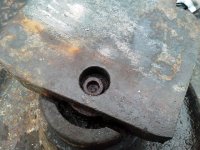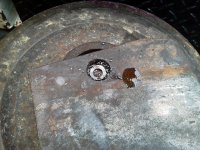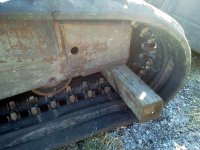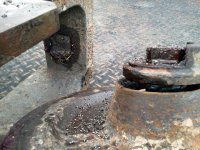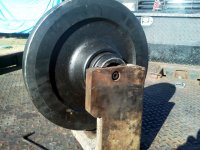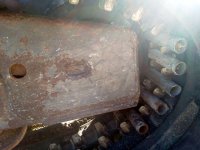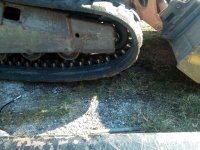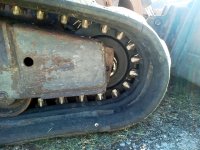My method of easy track removal and front idler replacement. We all know that working with machinery is dangerous, therefor I suggest that everyone besides me take their machine to the dealer and have it repaired.
For those unfamiliar with track adjustment on a ctl, it's simply grease pressure that pushes a piston forward on the front idler and yoke assembly. Loosening the fitting a bit allows the port to be exposed (In this case loosened with a 3/4" wrench.) Pushing back against the track / front idler pushes the grease out of the port. I turn the bucket cutting edge down and place a 4x4 between the bottom of the bucket and the center of the track at the front of the idler. Uncurling the bucket pushes the idler back in it's slot.
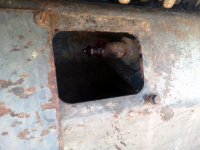
To get pressure off of the tracks for removal, I place some cribbing under the rear of the machine. I carry the cribbing on my trailer, but I've heard pf guys using a rock or stump for this if the machine loses a track in the field. With the cribbing in place, uncurling the bucket edge against the ground lifts the machine (tracks) off of the ground.
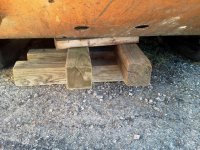
THE PIPE TRICK
I failed to take a photo of track removal, so this pic is in here twice. I learned this trick from Willie over on HEF and it works slicker than snot on a doorknob. Place a few pieces of pipe between the track lugs on the bottom near the idler. Get in the machine and reverse travel to get the pipes up on the idler so that the track lugs clear the idler. It works just fine with pipes between every other track lug, but I have extra pipe so I use them. At this point I use my tractor and a chain to slide the track clear of the idler track. I've heard that this can also be done with a couple of cheater bars in a pinch. In the last pic you can see that the bearing is long gone.
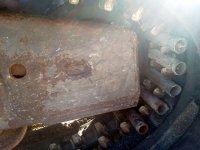
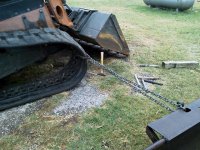
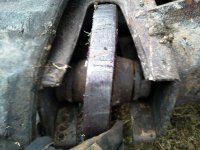
With the track out of the way, the idler/yoke assembly slides right out. (If I were changing out the track adjust assembly, it slides out next.) I don't know how much the idler/yoke actually weighs, but it's upwards of 150lbs. It's heavy. On the bench (my flatbed) you can see how bad the bearing actually is.
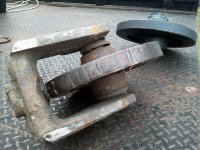
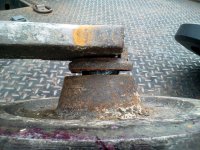
The idler sits in a slot in the yoke and is located by socket head cap screws on each side. The flats were rusted out and gone on the inside screw, so I had to drill it out far enough to slide the idler out of the yoke. Since I knew (from previous experience) that my hydraulics may bleed down enough for the bucket cylinders to block opening the door, I placed a 4x4 in there to spread out pressure on the track lugs and lowered the machine.
